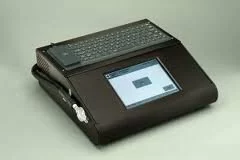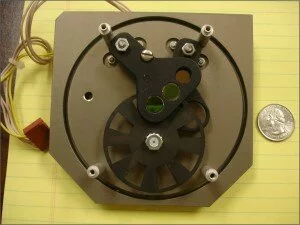 I teach a course entitled “Drunk Driving: Law and Practice” at the Auburn Campus of the Thomas M. Cooley Law School. One two hour class session is devoted to the science and administration of infrared breath testing. A special emphasis is given to the DataMaster because that is the instrument used for law enforcement purposes throughout Michigan.
I teach a course entitled “Drunk Driving: Law and Practice” at the Auburn Campus of the Thomas M. Cooley Law School. One two hour class session is devoted to the science and administration of infrared breath testing. A special emphasis is given to the DataMaster because that is the instrument used for law enforcement purposes throughout Michigan.
Exams are next week, and a student emailed me the following question relative to the DataMaster filters. My answer follows.
Question:
When reviewing breath testing and discussing the filters in the optical bench, I was stumped by what the filters are looking for in Michigan. It is my understanding that there are 2 and 1 is looking for acetone. My notes are void for what the other is looking for.
Answer:
I probably did say that one filter was for acetone, and while that is in many ways accurate it is also somewhat misleading. This is the problem when we get in depth into the science in a law class because it’s difficult to accurately cover everything without getting into too much confusing detail or otherwise becoming pedantic.
As I did indicate, these are not really filters as such because they don’t “filter” as much as they change the characteristics of the light passing through the lens and being measured by the DataMaster’s detector. As we discussed, the DataMaster target frequency is 3.37. However, certain molecules, like Acetone, also absorb heavily at 3.37, but may absorb more heavily at other wavelengths such as 3.44 or 3.5. By testing the breath with the different filters in the optical path, and then comparing the measurements at these different wavelengths the machine can try to determine if something other than alcohol is present.
The filters are part of the optical bench, which is pictured here.
They are “centered” at specific wavelengths, one of which (3.44) which is on the shoulder of ethanol. The other is at a peak of acetone (3.37) and the third, if used, is at 3.50 which plugs a gap for some of the exotic stuff like dyethyl ether. Michigan does not use the 3.5 filter.
These wavelengths were ostensibly selected to provide a distinguishable ratio between them, not to specifically to identify anything. It just so happens that the compounds that we are interested in distinguishing do affect the ratio and therefore allow the DataMaster to be reasonably specific for ethanol. It is usually best, for purposes of a good understanding, to not attempt to identify the filter by any substance (such as Acetone), but rather to infer to that certain substances may be present if certain deviations between the measurements exist.
In a sense the filters change the characteristic of the infrared, but only by eliminating all wavelengths except those that are meant to be perceived, measured and compared (as in Michigan the DataMaster “filters” are 3.37 and 3.44).
So, understanding that, you can see how a colored lens does not actually filter anything specific, and why, strictly speaking, it is improper to say that these filters are specific for any one molecule.
Additionally, it is easier to understand how things like Acetone can cause falsely high breath test readings if the filters are not present, are not working properly, or have been insufficiently tested or maintained.
Get a FREE confidential CASE EVALUATION on your Michigan OWI/OWVI/DUI by calling (248) 306-9159, or filling out this consultation request form. Call now, there’s no obligation!

{ 1 trackback }